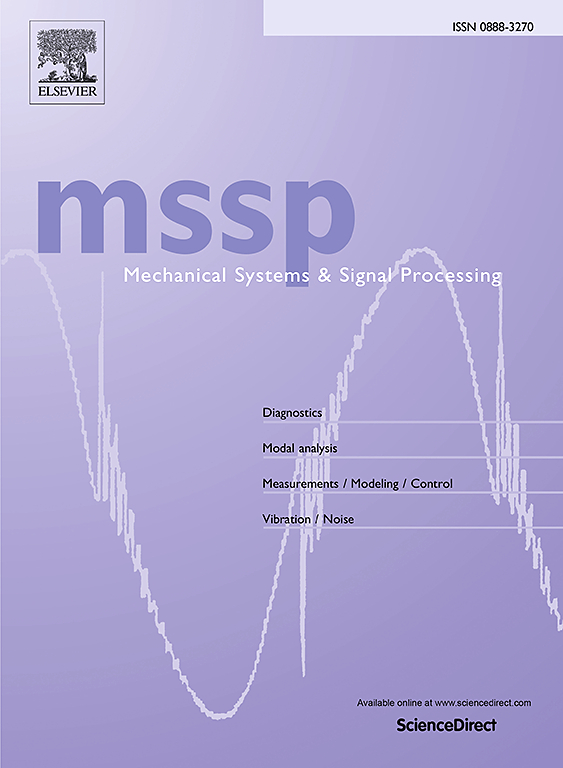Novel two-stage adaptive weight coefficients for Finite Element Model Updating of a cable-stayed bridge via sensitivity analysis and Kriging model
IF 7.9
1区 工程技术
Q1 ENGINEERING, MECHANICAL
引用次数: 0
Abstract
The weight coefficients of the structural response residuals in an objective function are the key parameters affecting a Finite Element Model Updating (FEMU) results. Traditional equal weight methods cannot measure the importance and relative errors of different response residuals, resulting in low prediction accuracy of the updated Finite Element (FE) model. This study proposes a two-stage adaptive weight coefficient method according to the relative errors of the measured static displacements and modal frequencies. In the first stage, high weights are assigned to low-order frequencies and large displacements because they have higher accuracy and are less affected by environmental noises than high-order frequencies and small displacements. In the second stage, the weights for the responses with small relative errors are adaptively increased to reduce the prediction errors. This approach was comprehensively validated by numerical simulations of a damaged truss under various noise conditions and a full-scale cable-stayed bridge based on experimental measurements. Results indicate that the two-stage adaptive weight coefficients improve model updating accuracy and maintains robustness under various noise conditions compared to equal weight method. The updated FE model obtained from adaptive weight method for the cable-stayed bridge shows higher accuracy in predicting frequency and displacement than that obtained from equal weight method. After the model update, the maximum relative frequency error is reduced from −16.98% to −6.18%, and that of displacement is reduced from 17.85% to 5.87%. The two-stage adaptive weight coefficients improve the accuracy of FE model updating for bridge structures.
求助全文
约1分钟内获得全文
求助全文
来源期刊

Mechanical Systems and Signal Processing
工程技术-工程:机械
CiteScore
14.80
自引率
13.10%
发文量
1183
审稿时长
5.4 months
期刊介绍:
Journal Name: Mechanical Systems and Signal Processing (MSSP)
Interdisciplinary Focus:
Mechanical, Aerospace, and Civil Engineering
Purpose:Reporting scientific advancements of the highest quality
Arising from new techniques in sensing, instrumentation, signal processing, modelling, and control of dynamic systems
 求助内容:
求助内容: 应助结果提醒方式:
应助结果提醒方式:


